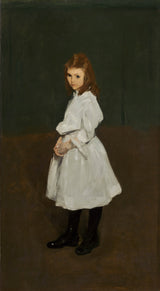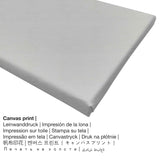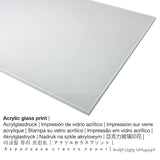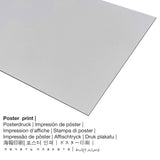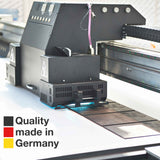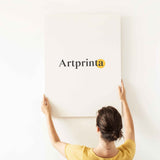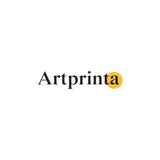George Bellows, 1907 - Nwata nwanyị na White (Queenie Burnett) - mbipụta nka mara mma
Ụtụ gụnyere. Mbupu gbakọrọ na ndenye ọpụpụ.
(© Nwebiisinka - National Gallery of Art - Nnukwu osisi nke Art)
Advised by his friend and teacher Robert Henri to select subjects that reflected the realism of modern urban life, George Bellows portrayed the recreational activities of New York City’s lower-class children in such paintings as River Rats (1906, private collection), and Forty-two Kids (1907). In 1907 he painted two full-length portraits of individual children: Little Girl in White and Frankie the Organ Boy (both now at the Nelson-Atkins Museum of Art, Kansas City, MO). Unlike his late 19th-century predecessors, who popularized the street urchin genre by representing well-scrubbed, idealized children playing with pets or engaged in entrepreneurial activities, Bellows portrayed his subjects in a bluntly realistic manner. The subject of this painting, Queenie Burnett, was the artist’s laundry delivery girl. Her underprivileged background is evident in her gaunt face, exaggeratedly large eyes, unkempt hair, and ungainly figure.
This was Bellows’s first figural work to be exhibited around the country—it was included in 15 public exhibitions during his lifetime—and he was awarded the first Hallgarten Prize when the painting was shown at the National Academy of Design in 1913.
Ihe ị kwesịrị ịma gbasara ọrụ nka ihe karịrị afọ 110
Little Girl in White (Queenie Burnett) is a masterpiece made by George Bellows in 1907. The original of the painting was made with the size: 158 x 87 cm (62 3/16 x 34 1/4 in). Mmanụ na kwaaji was applied by the North American artist as the technique for the masterpiece. Furthermore, this artpiece is in the the digital collection of Nnukwu osisi nke Art. Site n'ikike nke - National Gallery of Art, Washington (ikikere: ngalaba ọha).Kridi n'obi nke artpiece bụ ndị a: . Ọzọkwa, itinye n'ọnọdụ dị na eserese format ya na oke onyonyo nke 9: 16, nke pụtara na ogologo bụ 45% mkpụmkpụ karịa obosara.
Ngwa ngwaahịa dị
Anyị na-enye ihe dị iche iche dị iche iche na nha maka ngwaahịa ọ bụla. Ya mere, anyị na-enye gị ohere ịhọrọ n'ime nhọrọ ndị a:
- Mbipụta iko acrylic na-egbuke egbuke (nke nwere ezigbo mkpuchi iko): A glossy print on acrylic glass, which is sometimes referenced as a an art print on plexiglass, will turn the original into lovely décor. Above all, the acrylic fine art print forms a viable alternative option to aluminium and canvas fine art prints. The great benefit of a plexiglass print is that sharp contrasts plus artwork details will be recognizeable with the help of the delicate gradation of the print. Our plexiglass with real glass coating protects your selected art replica against light and heat for decades.
- Mbipụta ọla (aluminium dibbond): These are metal prints on aluminium dibond with an outstanding depth effect. The non-reflective surface make a fashionable impression. For your Print On Aluminum Dibond, we print the favorite artwork onto the surface of the white-primed aluminum composite. The colors are luminous in the highest definition, fine details appear clear and crisp. This direct print on aluminium is the most popular entry-level product and is a modern way to display art, as it draws attention on the whole artwork.
- Mbipụta kwaaji: The printed canvas, not to be mistaken with a real canvas painting, is a digital replica printed on a UV direct printer. A canvas print of your favorite artpiece will let you turn your art print into a large size artwork as you know from art galleries. Hanging a canvas print: Canvas prints are relatively low in weight. That means, it is easy and straightforward to hang the Canvas print without the use of additional wall-mounts. A canvas print is suitable for any type of wall.
- Bipụta akwụkwọ mmado n'ihe kwaaji: A poster is a printed canvas paper with a fine structure on the surface. Please note, that depending on the size of the poster we add a white margin of around 2-6cm round about the print motif, which facilitates the framing with a custom frame.
Tebụl onye na-ese ihe
| Aha onye nka: | George Bellows |
| Aliases: | Bellows George, George Wesley Bellows, בלאוס ג'ורג', Bellows George Wesley, Bellouz Dzhorzh, geo bellows, George Bellows, geo. bellows, Bellows |
| Gender: | nwoke |
| Obodo onye nka: | American |
| Ọrụ: | onye na-agụ akwụkwọ, onye na-ese ihe |
| Mba onye si: | United States |
| nhazi ọkwa: | omenkà nke oge a |
| Oge ndu: | 43 afọ |
| Afọ amụrụ: | 1882 |
| Afọ nwụrụ: | 1925 |
Nkọwa ahaziri nke mpempe nka
| Aha ọrụ nka: | "Little Girl in White (Queenie Burnett)" |
| Nhazi nka: | sere |
| Otu izugbe: | nkà nke oge a |
| Nhazi oge: | 20th narị afọ |
| Emepụtara na: | 1907 |
| Afọ nka: | 110 afọ |
| Agba na: | mmanụ na kwaaji |
| Akụkụ ihe osise izizi: | 158 x 87 cm (62 3/16 x 34 1/4 na) |
| Egosiputara na: | Nnukwu osisi nke Art |
| Ebe ngosi nka: | Washington DC, Njikota Obodo Amerika |
| ibe weebụ: | Nnukwu osisi nke Art |
| License: | ngalaba ọha |
| Site n'aka: | National Gallery of Art, Washington |
Banyere edemede a
| Bipụta ụdị ngwaahịa: | ezi nka mmeputakwa |
| Usoro mmeputakwa: | mmeputakwa n'ụdị dijitalụ |
| Produzọ mmepụta: | UV kpọmkwem obibi |
| Ihe ngosi: | arụpụtara na Germany |
| Ụdị ngwaahịa: | na mmepụta ihe |
| A na-atụ aro iji ngwaahịa eme ihe: | mgbidi mgbidi, ụlọ mmepụta nka nka |
| Nhazi nke ihe nka: | usoro eserese |
| Njikwa oyiyi: | 9: 16 - ( Ogologo: obosara) |
| Mmetụta akụkụ: | ogologo bụ 45% mkpụmkpụ karịa obosara |
| Ụdị dị iche iche dị: | Mbipụta iko acrylic (nke nwere ezigbo mkpuchi iko), mbipụta kanvas, mbipụta ọla (aluminium dibond), mbipụta akwụkwọ mmado (akwụkwọ kwaaji) |
| Kanvas n'elu etiti ihe ndọtị (mbipụta akwa akwa): | 50x90cm - 20x35", 100x180cm - 39x71" |
| Mbipụta iko acrylic (nwere ezigbo mkpuchi iko) dị iche iche: | 50x90cm - 20x35", 100x180cm - 39x71" |
| Nhọrọ nha nke akwụkwọ mmado (akwụkwọ kwaaji): | 50x90cm - 20x35" |
| Nha ebipụta aluminom: | 50x90cm - 20x35" |
| Nhazi nke nka nka: | na-enweghị etiti |
Ederede iwu dị mkpa: We try our utmost in order to describe our art products with as many details as possible and to demonstrate them visually on the respective product detail pages. At the same time, the tone of the print materials, as well as the print result might diverge slightly from the representation on the screen. Depending on the settings of your screen and the quality of the surface, not all color pigments are printed one hundret percent realistically. Because the fine art prints are processed and printed manually, there may also be minor deviations in the size and exact position of the motif.
© Nwebiisinka - ikike ọgụgụ isi nke - Artprinta.com

